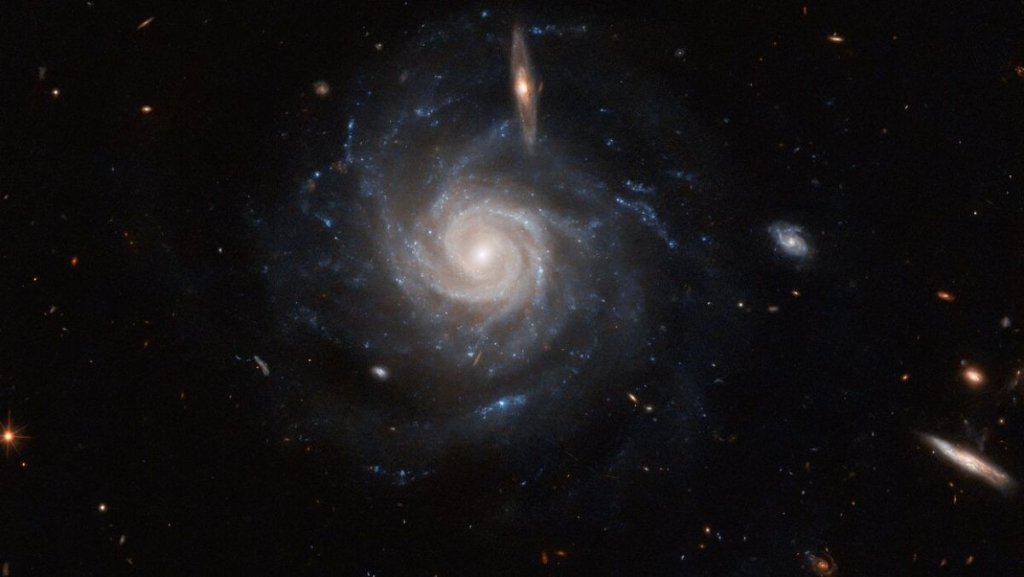The famed Hubble snagged the clearest picture yet of a faraway galaxy while hunting for evidence of a supernova.
The area, imaged by the Hubble Space Telescope, came into the limelight three years ago after astronomers witnessed the violent death of one of its massive stars just days after it ran out of fuel and exploded into a supernova.
The fresh, face-on image showcases the distant UGC 678 galaxy, which lies 260 million light-years from Earth in the constellation Pisces. While astronomers know very little about the galaxy’s formation and makeup, past observations with different telescopes have unveiled it to be an intriguing object.
Related: What is a supernova?
(opens in new tab)
On Dec. 2, 2020, astronomers discovered evidence (opens in new tab) of “an enormous supernova explosion” close to the galaxy’s heart, revealing that a star many times more massive than the sun had run out of fuel and caved under its own gravity.
The mysterious star’s explosive death that followed (opens in new tab) was spotted by the Asteroid Terrestrial-Impact Last Alert System (ATLAS), which is a network of four telescopes in Hawaii, Chile and South Africa that hunts the sky for near-Earth asteroids. Although ATLAS’ main focus is to warn astronomers of objects that will impact Earth, the project also flags sudden changes in signals from celestial objects, like those sprouted from the violent death of a star in the UGC 678 galaxy.
Astronomers who reported the discovery (opens in new tab) of this supernova in 2020 said they saw the event “within a few days of explosion,” and called for more detailed observations. Just shy of two weeks after the discovery, the European Space Agency’s (ESA) Gaia spacecraft confirmed that the bright light seen by astronomers was indeed due to a supernova.
Related: Astronomers catch rare glimpse of oldest known supernova, which dates back to Year 185
Further studies of UGC 678 include sightings by the Panoramic Survey Telescope & Rapid Response System, or Pan-STARRS, in Hawaii. Hubble also observed the galaxy twice to search for remnants left in the wake of the explosion, “in the hope of unearthing clues to the identity of the star that produced the 2020 supernova,” ESA representatives wrote in an image description (opens in new tab) published on Monday (April 17).
Multiple such detections have helped astronomers pin down what the galaxy looks like, but they do not yet know much about the erupted star itself.
Although UGC 678 is not part of the Milky Way, the galaxy’s shape appears similar to our home galaxy. UGC 678 has a spiral structure with a star studded disk morphed into swirling arms.
Also, the galaxy’s center has a bar structure, thanks to gas and dust that is funneled inward. Astronomers say this framework similar to the Milky Way’s barred center but much, much fainter.
“It is visible as a diagonal group of stars that stretches from the lower left (7 o’clock) to the upper right (1 o’clock) of the galaxy’s core,” NASA officials wrote in a second statement (opens in new tab) published on Friday (April 21).
Follow Sharmila Kuthunur on Twitter @Sharmilakg (opens in new tab). Follow us on Twitter @Spacedotcom (opens in new tab) or Facebook (opens in new tab).






